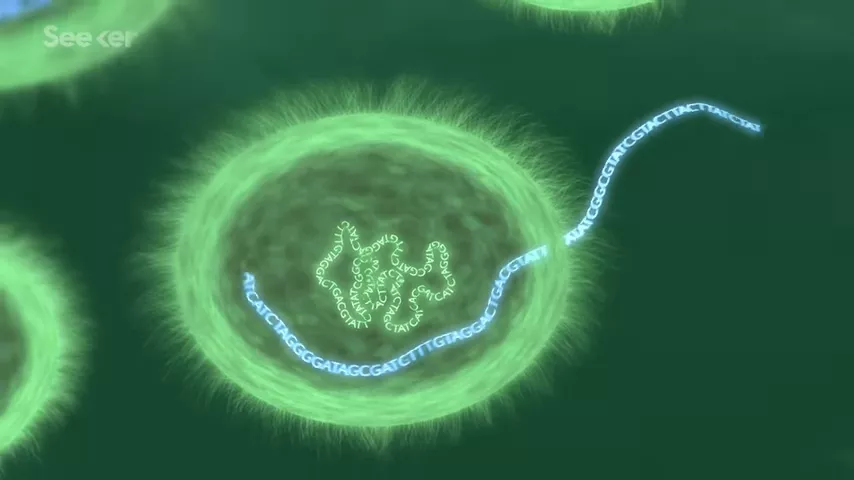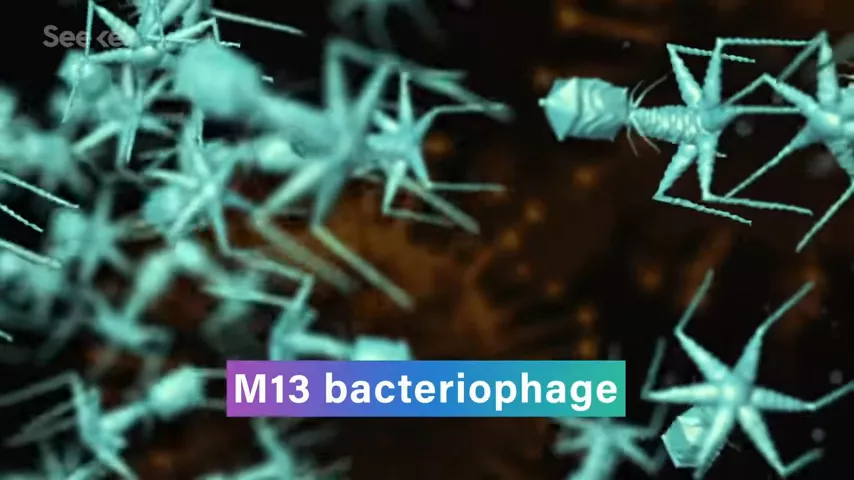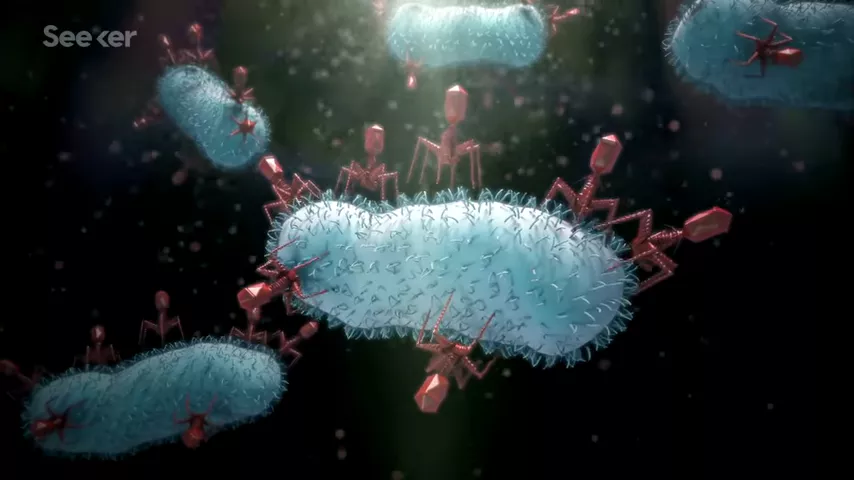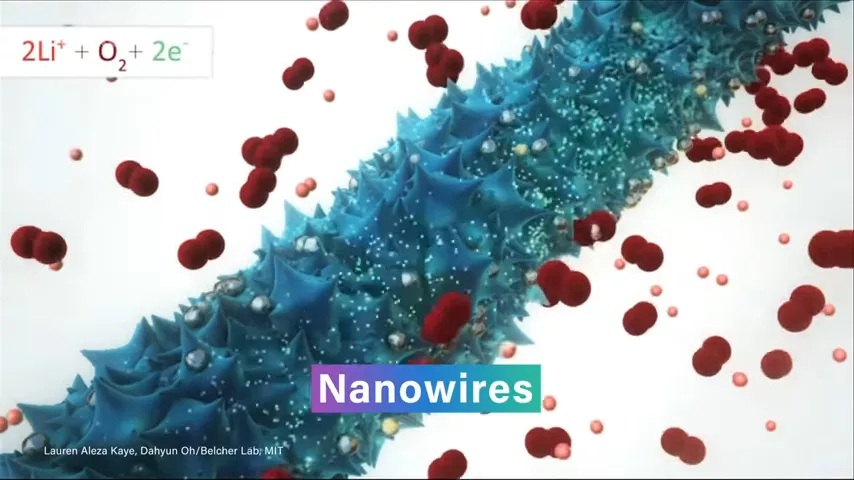At its core, this innovation is about exploiting the thing that viruses do best: DNA hijacking. See, viruses are a continual head-scratcher for us because they’re not technically alive; they contain genetic material—either DNA or RNA, depending on what kind of virus we’re talking about— but they can’t replicate on their own. They have to inject their genetic material into a living cell and get that cell to replicate their genetic material for them.
They’re kinda like microscopic pirates.
And while that makes them dangerous when it comes to disease, it can also be really helpful when it comes to bioengineering. There’s one particularly pioneering team at MIT that’s using viruses for their own devices.
They recognized that while viruses may insert their genome into our cells for destructive purposes, we can also insert information into their genome to make stuff.  They’re working with the M13 bacteriophage, and a bacteriophage is a kind of virus that only infects bacteria, and whose circular genome is relatively simple and easy to manipulate.
They’re working with the M13 bacteriophage, and a bacteriophage is a kind of virus that only infects bacteria, and whose circular genome is relatively simple and easy to manipulate.
Scientists expose batches of this virus to the material they want it to latch onto, like a specific kind of metal. Then, natural or engineered mutations in that virus's genome will alter the virus’ surface to be able to latch onto the material of choice. Then scientists take the viruses that have properly ‘learned’ to latch onto the material and pop them into the bacteria that virus would normally infect, which then make millions of copies of those modified viruses.  If you repeat this process over and over, those bacteria basically become viral replication factories that can pump out a finely-honed viral tool that does your bioengineering bidding.
If you repeat this process over and over, those bacteria basically become viral replication factories that can pump out a finely-honed viral tool that does your bioengineering bidding.
So, that’s super cool. But how the heck do you make something like a metal-hugging virus into something like… a battery? Well, the kind of metal matters. Scientists can make a batch of viruses that latch onto cobalt oxide. Or another batch that adheres to manganese oxide. That’s the beautiful thing about genetic modification in relatively simple organisms — it’s kinda just cut and paste. You could do this for tons of elements on the periodic table, but if the particular materials that I just mentioned sound familiar, it’s because we use them in some batteries.
Or another batch that adheres to manganese oxide. That’s the beautiful thing about genetic modification in relatively simple organisms — it’s kinda just cut and paste. You could do this for tons of elements on the periodic table, but if the particular materials that I just mentioned sound familiar, it’s because we use them in some batteries.
The extra cool thing about this technique is not only that these viruses can be engineered to get metal to glom onto them, but also—those metal-coated viruses can then start to stick to each other. And this forms what are called nanowires—that’s metal-coated virus nanowires— which can be used in battery electrodes.
Back in 2009, the MIT team was able to make a lithium ion battery using this viral assembly technique— and the battery worked! It powered an LED light! Now the team is also working on using these microbial factories to make lithium-oxygen batteries, also called lithium-air batteries. That’s literally a kind of battery where oxygen is what spurs the chemical reaction that makes the battery work. That means that with a continual supply of oxygen— as opposed to a finite supply of an electrolyte within the battery cell— a lithium oxygen battery could theoretically store ten times more energy in relation to its mass than a lithium-ion alternative.
Viruses are uniquely suited to building nanowires out of nanomaterials because they already exist and function and replicate on the micro and nanoscale, so we’re just hacking into nature’s existing tiny toolbox instead of having to build it all from scratch.
But maybe the most exciting thing about this viral battery production process is just how clean it could be.
Manufacturing electrodes the old-fashioned way can result in toxic byproducts and requires very high temperatures, whereas all that’s needed here is genetically engineered viruses, water, and the metal— which, granted, does still come with its own set of issues around mining, etc. And lithium oxygen batteries themselves have their own set of limitations. They’re currently highly reactive. You have to remove impurities from the oxygen before you feed it to the battery, and they still have relatively low charging efficiency.
To continue pursuing this exciting battery production technique for all kinds of batteries, the MIT team is now focusing on getting their viruses in order— literally, having them grow in more ordered 3D structures as opposed to random ones.
So, all of this technology is still very much in the research and development phase, but with techniques like viral-mediated electrode assembly, maybe we’re closer to seeing a virus-powered car on the road than any of us would have thought before this article.


No comments yet